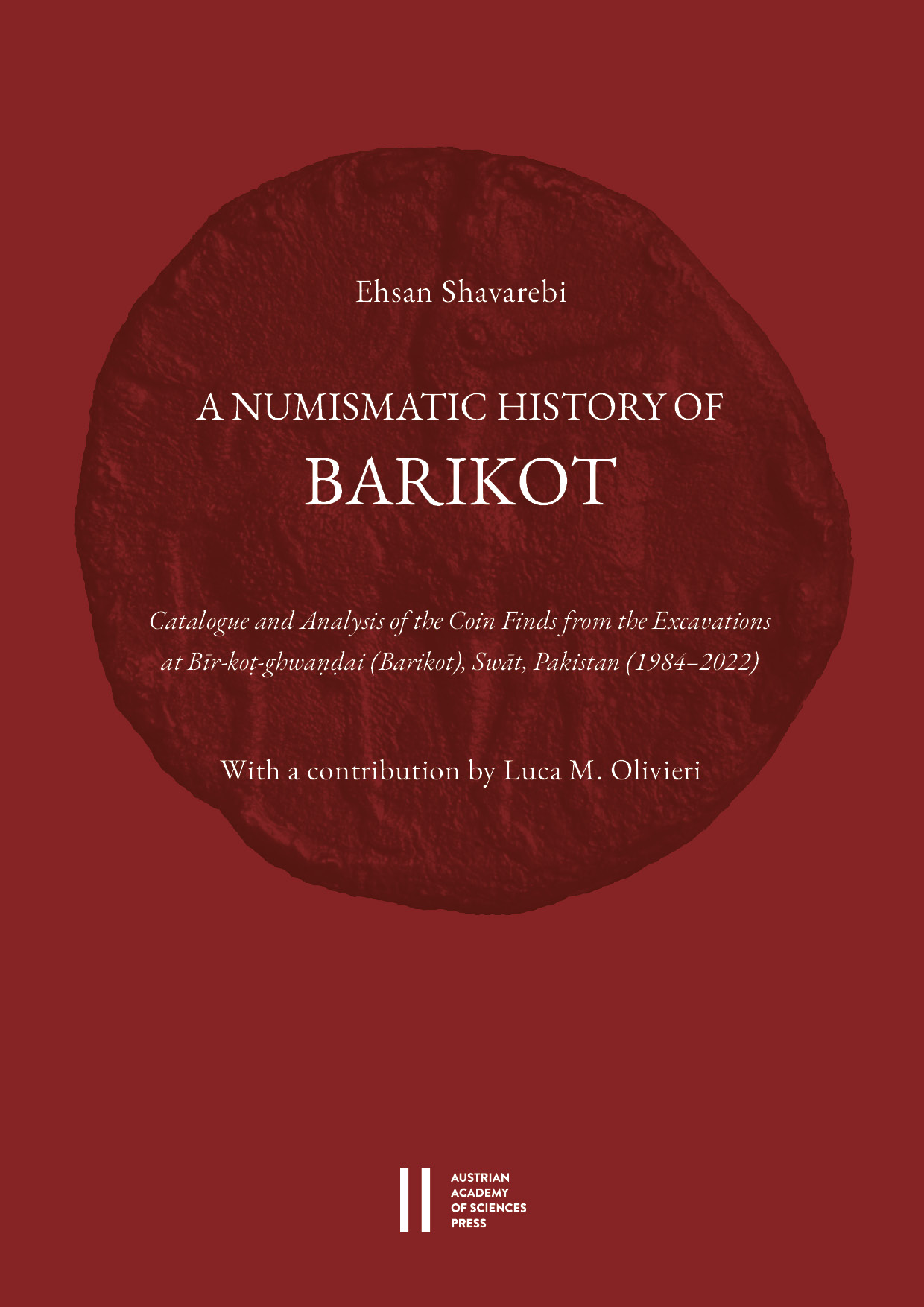
The present volume explores the coins unearthed during the excavations at the ancient city of Barikot (Swāt Valley, northern Pakistan) between 1984 and 2022. The excavations of the Italian Archaeological Mission at Barikot have revealed numerous settlement phases from the prehistoric to the Islamic times. Of particular significance are over 500 coin finds, which are placed in their historical context in this volume to draw a clear picture of the monetary circulation in the Swāt Valley (Uḍḍiyāna) throughout antiquity and the early Islamic period. The chronological framework of the coin finds spans from the third century BCE to the twelfth century CE, i.e., from the Indian Maurya dynasty to the Ghaznavids. The majority of the coin finds are from the Kušān period (first to fourth century CE). Various historical, typological, metrological, and topographical aspects of the coinage and monetary circulation of each period are addressed in separate chapters. The finds from Barikot are also compared with those from other documented sites in Uḍḍiyāna, Gandhāra, and adjacent regions in the Indo-Iranian borderlands. What should be highlighted is the stratigraphic documentation of the find contexts, which, based on the radiocarbon analyses, makes it possible to bring the coins into relation with other types of archaeological artifacts. This subject is discussed in an archaeological contribution by the director of the excavations, Luca M. Olivieri.
…
Der vorliegende Band behandelt die im Zuge der archäologischen Ausgrabungen zwischen 1984 und 2022 in Barikot (Swāt-Tal, Nord-Pakistan) gefundenen Münzen. Die Ausgrabungen der Italienischen Archäologischen Mission in Barikot brachten zahlreiche Siedlungsphasen von der prähistorischen bis zur islamischen Zeit zu Tage. Von besonderer Bedeutung sind über 500 Fundmünzen, die in diesem Band in ihren historischen Kontext gestellt werden, um ein anschauliches Bild des Geldumlaufs im Swāt-Tal (Uḍḍiyāna) in der Antike und der frühislamischen Zeit zu geben. Der chronologische Rahmen der Fundmünzen spannt sich vom 3. Jahrhundert v. Chr. bis ins 12. Jahrhundert n. Chr. und führt von der indischen Maurya-Dynastie bis zu den Ghaznaviden. Der Schwerpunkt des Fundaufkommens liegt in der Kušānzeit (1.–4. Jahrhundert n. Chr.). Verschiedene historische, typologische, metrologische und topographische Aspekte der Münzprägung und des Geldumlaufs jeder Epoche werden in separaten Kapiteln erörtert. Ebenso werden die Funde aus Barikot mit denen anderer, dokumentierter Fundplätze in Uḍḍiyāna, Gandhāra und benachbarten Regionen in den indoiranischen Grenzgebieten in Beziehung gesetzt. Hervorzuheben ist die stratigraphische Dokumentation der Fundkontexte, die auf Basis der Radiokarbon-Analysen die Möglichkeit bietet, die Münzen mit den anderen archäologischen Artefakten in Beziehung zu setzen. Ein archäologischer Beitrag vom Leiter der Ausgrabung, Luca M. Olivieri, vervollständigt das Bild.
2025
978-3-7001-9551-1
978-3-7001-9552-8
469 Seiten, zahlr. Farb- und s/w-Abbildungen
29,7x21cm, gebunden, englisch